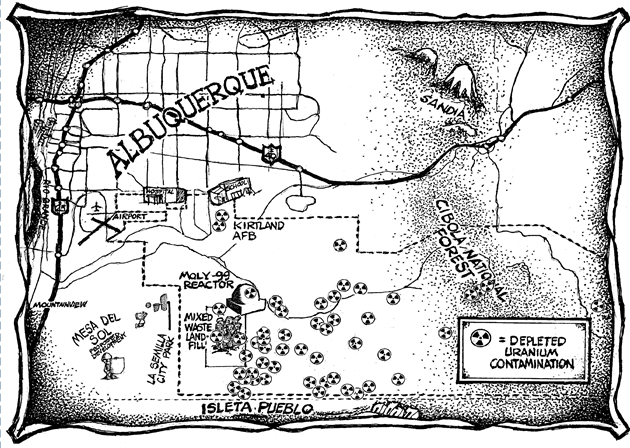
Institute for Energy and Environmental Research (IEER)
Files
Download Full Text (1.1 MB)
Document Type
Report
Date
4-21-2006
Description
Main findings
1. There are major discrepancies in the materials accounts for weapons plutonium in Los Alamos Waste. An analysis of official data indicates that the unaccounted for plutonium amounts to about 300 kilograms.1 This estimate takes into account all sources of data for plutonium discharged into waste streams (stored, shallow burial, soil, intermediate depth) as well as the hydronuclear tests that were conducted at the Los Alamos site in 1960-61. Plutonium accounting data in the safeguards account (the Nuclear Materials Management and Safeguards System (NMMSS)) show that discharges from processing areas to waste were particularly high in the 1980s. We have not been able to discover the reason for these high losses to the waste but have provided some indications of possible explanations.
2. If much or most of the unaccounted for plutonium was disposed of as buried low-level waste and buried transuranic waste on site at Los Alamos, the long term radiation doses would far exceed any allowable limits. Remediation would be necessary but would be very complex due to the unknown disposal patterns. Further, in that case the NMMSS plutonium account would be wrong, since it shows less than 50 kilograms of waste before 1980, the period that accounts for almost all the documented buried waste containing significant amounts of plutonium.
3. It is possible that significantly more plutonium is going to the Waste Isolation Pilot Plant (WIPP) than indicated by DOE documentation. If so, this has major implications for the oversight of the operations of WIPP. The IEER review of waste characterization documents prepared for the New Mexico Attorney General’s Office in 1998 indicated many areas of missing and incomplete waste documentation. If the NMMSS account is deemed as correct in the annual reported totals of plutonium in waste, the possibility that WIPP accounts are incorrect appears to be significant. Over 90 percent of 610 kilograms of plutonium in waste in NMMSS is attributed to the 1980s and 1990s.
4. Even if only a part of the unaccounted for plutonium is actually missing, this would have major security implications. As a reference point, North Korea’s entire stock of plutonium is only about 15 percent of our estimate for the plutonium unaccounted for at LANL.
This research was completed money allocated during Round 5 of the Citizens’ Monitoring and Technical Assessment Fund (MTA Fund). Clark University was named conservator of these works.
If you have any questions or concerns please contact us at digitalrepository@clarku.edu
Publisher
Institute for Energy and Environmental Research (IEER)
Format
Keywords
nuclear weapons, nuclear weapons testing, environment, non-governmental organizations, United States Department of Energy, tribal governments, environmental cleanup, radioactive fallout, radioactive waste
Rights
Copyright belongs to the authors. Clark University was chosen by the non-profit peace and environmental groups as the conservator of these reports; our right to distribute these works ensures they remain available to the public in perpetuity as intended. Reuse at your own discretion with with due deference to copyright holders.
Location
Takoma Park, MD
Recommended Citation
Institute for Energy and Environmental Research (IEER); Makhijani, Arjun; and Smith, Brice, "Dangerous Discrepancies: Missing Weapons Plutonium in Los Alamos National Laboratory Waste Accounts" (2006). Institute for Energy and Environmental Research (IEER). 2.
https://commons.clarku.edu/ieer/2



